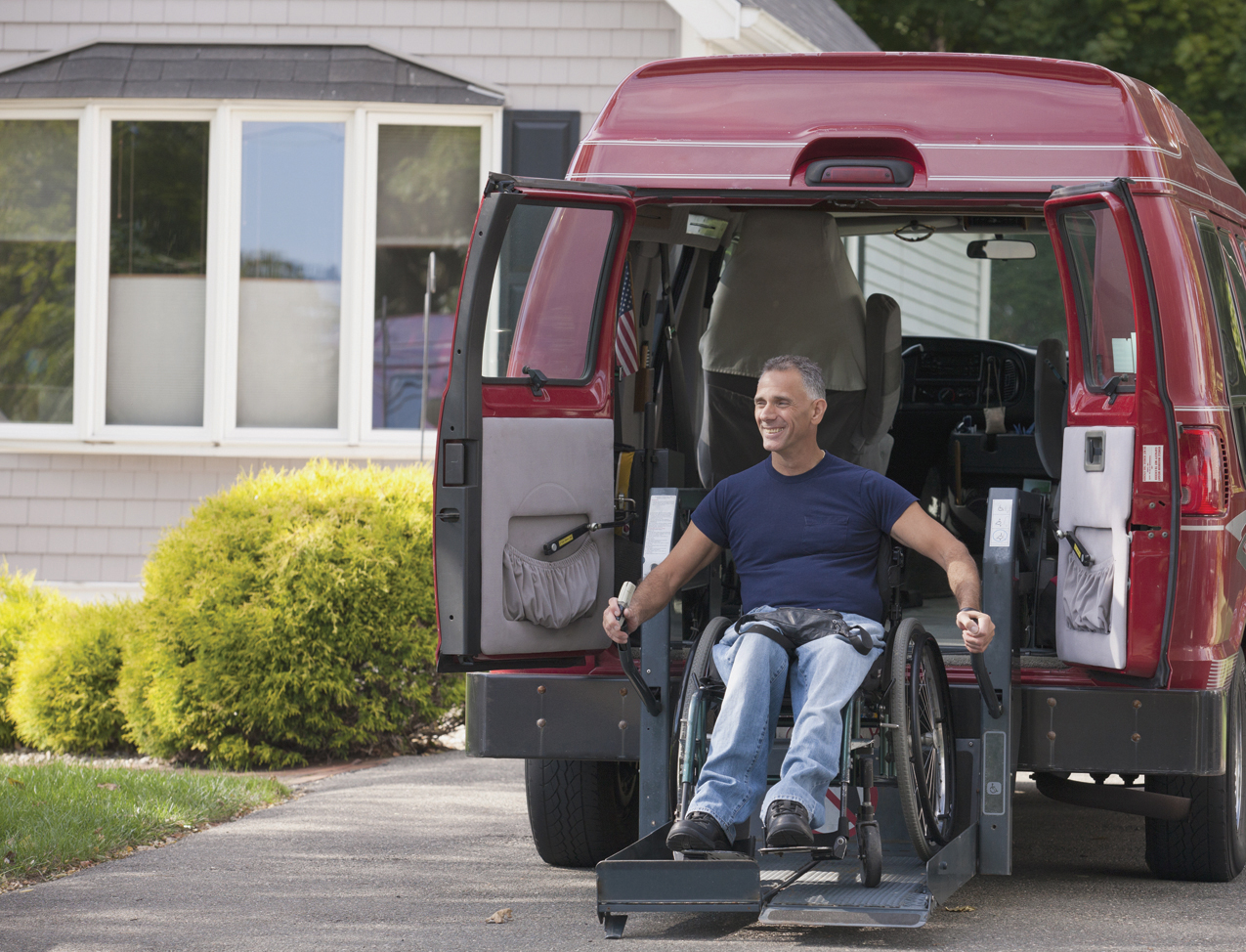Featured Article

Doing the Most Good for Your Neighbors and Your Community
Looking for ideas to help your neighbors in need and to transform your shared spaces into safe and welcoming places? The Northland Review outlines four ways to turn your philanthropic dreams into reality:
Help Veterans and Honor Military Heroes
Helping veterans in your community is a wonderful way to show your appreciation to people who have sacrificed so much for others. You can help by raising funds for purchasing or repairing wheelchairs that can be donated to people dealing with mobility issues, by putting together and delivering comfort kits or healthy meals to the homebound and the sick, or by organizing banquets where those heroes can be recognized and celebrated.
If you know of people in your area who have family members deployed overseas, you can give these soldiers something to smile about by sending them holiday cards, care packages, and other goodies. Make it a community effort by recruiting volunteers to help you come up with themes and ideas, with fundraising efforts, and with day-off activities.
Clean Up Shared Spaces
If your local park is in need of TLC, organize a cleaning crew and decide on a date and time when you can all gather to pick up trash and debris. Then spruce up the area by planting new greenery, shaping shrubs, clearing overgrown brush, and adding trash cans if need be.
Inviting friends to join your volunteer cleanup can be made simple and efficient by using an online invitation maker. These tools allow you to create custom, eye-catching digital invitations that convey the details and purpose of your event effectively. You can personalize your invitation with images, colors, and fonts that match the theme of your cleanup event. Once your invitation is ready, you can easily distribute digital invitations via email or social media platforms. This not only saves time and resources but also allows your friends to RSVP with just a click.
Make sure you talk to your city officials and parks and recreation department to secure all necessary permits and ask them to publish your clean-up event on their social media pages and publications to get the attention of local residents who may be interested in helping out.
Write down a list of all necessary supplies like trash bags, grabbers, and gloves, and start collecting donations early to make sure your whole crew has what it needs to get to work. Additionally, make sure you’re protected from poisonous plants, dangerous materials like broken glass, and the negative effects of the sun during your cleanup day!
Start a Nonprofit Corporation
If you have an idea for a business with educational, humanitarian, or scientific benefits, consider forming a nonprofit corporation. There are several advantages to incorporating that go beyond tax-exemption status. Your board members will be protected from personal liability in case of litigation, and applying for grants and public funding will be a lot easier.
Foundations and philanthropic organizations willing to donate will also benefit since their gifts to your nonprofit will be tax-deductible. Ultimately, establishing yourself as a nonprofit corporation will give you more credibility and, as the National Council of Nonprofits explains, help establish yourself as a real force for good in your community. But make sure you create bylaws detailing your operations, rules, and regulations, and stay compliant with your state, so you don’t lose your nonprofit status.
Help Shape the Next Generation
Help younger people reach their full potential by donating your time and becoming a helper or mentor. If you feel like you work best with little ones, look for volunteer opportunities at your local school or library. Put together a collection of age-appropriate books to read aloud and donate to the classroom, help teachers gather educational materials and put together interactive activities for little hands, or spend an hour helping your librarian clean up and organize reading stations.
And if you want to shape the minds of teenagers, Youth.gov suggests offering your help in the form of mentoring, after-school tutoring, or a day of shadowing at your place of employment. Establish a network of professionals willing to help keep younger adults and troubled teens off the streets by giving them opportunities to learn and improve themselves.
No matter the size of the city you live in, you can find opportunities to do good all around you. So find your passion and share it with others through digital invites to create a network of volunteers eager to improve the lives of others. You’ll soon discover that your own life will be greatly improved as well.

The Step-by-Step Guide to Setting Up a Nonprofit Organization
Setting up a nonprofit organization can be an incredibly rewarding experience. It is also a lot of work. It takes planning, dedication, and commitment to make it happen. This guide will help you understand the steps involved in the process and provide you with tips on how to make your nonprofit successful.
If you’re a chamber of commerce or economic development organization, Northland Review offers customized fundraising solutions.
Selecting a Cause
The first step in setting up a nonprofit organization is choosing a cause that is meaningful to you. Think about what issues are important to you and why they are important. Once you have identified the cause, do research on other organizations that are already working on similar issues so that you can determine how your organization will stand out from them.
Financial Knowledge
Before getting started, it’s important to understand the financial aspects of running a nonprofit organization. You’ll need to develop a budget, secure funding sources, and create financial policies for your organization. Additionally, you’ll need to consider potential tax implications for both yourself and your donors when setting up your nonprofit.
Methods for Organizing Your Nonprofit
When organizing a nonprofit organization, it is essential to consider the type of entity it will be registered as, who will serve on its board of directors, and how decisions within the organization will be made. Before committing to anything, make sure to research any legal requirements for operating in your state or country.
Properly document all aspects of the organization to ensure that it is run in compliance with applicable laws. If you want easier access to grants and funding, consider forming a nonprofit corporation.
Making Logistics Plans
Once you've taken care of all the important stuff, it's time to start planning how you're actually going to run your nonprofit. This includes things like finding office space and buying equipment, as well as creating marketing materials. If necessary, file the appropriate paperwork with local government agencies so you can operate legally.
Managing Daily Operations
Having systems in place for daily management is essential when running any type of business – nonprofits included. Create processes for tracking donations and expenses, assign tasks/responsibilities among staff, set goals, and establish communication protocols. Doing so ensures that everyone involved understands their role within the organization which helps keep things organized and running smoothly day to day.
If you are new to running a business or organization, you may benefit from taking business-related courses. In fact, you can pursue a degree in business to get a wider understanding of what it takes to run a business from marketing to management and finances. Finding an online program like this could help you more effectively set up and run your new nonprofit.
Obtaining Donations
Securing donations is one of the most critical components of a successful nonprofit organization. Without them, no funds would be available to keep the operation running. Establishing relationships with potential donors through events, social media campaigns, and other means is necessary in order to secure donations as people tend to be more willing to donate if they know who their money is going to and how it is directly helping the causes they support.
Seeking and Recruiting Volunteers
Volunteers are an essential part of many nonprofits, providing valuable assistance while helping keep costs down. When recruiting volunteers, make sure their skills match the tasks within the organization. Local volunteer programs from churches, schools, and other organizations offer easy ways for individuals to get involved and help out.
Get Your Nonprofit Up and Running
Setting up a successful nonprofit requires dedication and hard work. By taking steps like choosing a cause, finding volunteers, having a plan for managing daily operations, and registering as a nonprofit corporation, you can start a successful nonprofit.
Are you looking for information about what is going on in the Twin Cities area? Then check out Northland Review!

What to Do When You Suspect Someone You Love Has an Addiction
When you see someone you care about acting in a concerning way, it can be difficult to know how to help. If you believe your loved one needs help with an addiction, things can feel particularly complicated. You don’t want to overstep bounds or push your loved one away, but you can’t sit by and watch the situation deteriorate. With thoughtful strategies, you can reach out in ways that are supportive, helpful and revealing. Northland Review shares a few below.
Understanding addiction. Addictions are not the same as bad habits. Habits are something the user does by choice and could be stopped at will, while Healthline notes that addictions include a physical or psychological component. Addictions drive the choices someone makes, and are vital to the person’s life. Someone with a substance addiction cannot control how it is used and depends on it for daily coping, and oftentimes, the addiction interferes with school, work, or home life. While a habit is a chosen part of someone’s life, it can develop into an addiction.
Make a difference. While many of us fear doing too much when someone is abusing substances, some research indicates being involved and supportive to your loved one can play a key role in recovery. While traditional logic tells us that an addict must want help before being receptive to treatment, by expressing your concern for your loved one and showing that you can see that he is suffering, acknowledging that pain can help your loved one know you see and hear his struggle. And while many people believe it’s necessary for someone to “hit rock bottom” before being able to turn things around, that’s not entirely true, and many people are motivated while their lives are still quite viable.
According to Consultant360.com, those with a substance abuse problem often want to talk about it, but are afraid of what their loved ones’ reactions will be. It’s also important to understand that many people resist getting help because they don’t want to be labeled an “addict.” Reaching out to your loved one with compassion can open doors to being receptive to assistance with the healing process.
Look Into Rehab Facilities. For many cases, entering into rehab is the ideal choice for those living with addiction. There are several drug rehabilitation centers in Minneapolis that offer programs ranging from group therapy to residential treatment and detox. Many also offer financial assistance for care or can accept health insurance. As you look for a rehab facility near you, make a point to check out its level of accreditation and types of care that are offered. You’ll want to be sure the kinds of therapy available are suited for you.
Kinds of therapies. There are several options for successfully treating addiction and supporting an addict. An addict should enroll in a program that best supports the individual’s needs. Consider specifics when contemplating options. Your loved one may require medical detox. Some programs are short-term, and some offer lengthy treatment with aftercare and ongoing support. There are gender-specific programs and programs specifically designed to support pregnant women. And different centers use different program methods and philosophies. For instance:
- 12-step programs are one option, providing a support system with proven results, seeking healing through a higher power.
- Non-12-step programs offer more clinically-oriented help for individuals who are uncomfortable with a faith-oriented environment.
- Religious-based treatments are shown to be effective. Faith-oriented methods help addicts feel respected and the programs are judgment-free. Those with a strong adherence to a particular faith may find comfort and connection through a program embracing those ideals.
- Holistic therapies are a balanced approach that some experts recommend because they address emotional, physical, spiritual, mental and social aspects of a person.
Words of caution. While it’s vital to support your loved one, some professionals point out it’s important to recognize there will be ups and downs, and throughout the process, the battle belongs to the addict. Encourage your loved one, stay optimistic, and set a good example by living a healthy life. Realize that taking care of yourself is important for your own well-being. If you allow yourself to become run down with worry or busyness, you can’t support your loved one as effectively. Remember to get sufficient sleep, eat properly, exercise and do some relaxing things you enjoy.
Support and connection. If you feel someone you care about may have an addiction, it’s crucial to reach out. Knowing you care and are willing to be supportive can make all the difference. Explore appropriate therapy choices, including a program through a drug rehab facility, and help your loved one without losing track of your own needs.

Remote Work Survival Guide for Parents of Infants and Toddlers
Working parents who have remote positions have struggled with balancing their job responsibilities with parenting, especially with young kids. According to a Gallup poll, 45% of full-time workers in the U.S. are still teleworking. Here are some tips from Northland Review to help survive remote work if you have a baby or toddler at home.
Schedule Your Day
If you have very young children, start using a strict schedule each day to give your kids some structure and eliminate some of the chaos. Zero to Thrive notes that establishing a solid routine for your child’s day may help you with getting your work done, too. Babies and toddlers need a set schedule with meals, playtime, naps, and activities to keep them happy and healthy.
Get Support From Family or Friends
If your job is demanding, you may need to get some help from family or friends with keeping your kids entertained. You can also talk to neighbors and friends about getting a nanny share or finding an older teen to help watch your little ones.
Plan Easy Activities for Your Child
During those times when you can’t find anyone else to help, plan out easy activities for your baby or toddler that don’t require a lot of supervision. For example, you can save screen time for when you’re busy working.
Also be creative when it comes to keeping your toddler occupied when you're trying to work. One option is learning toys that are made to captivate a child's attention while they’re engaged in learning. When looking at products like play kitchens or building blocks, take a look at online reviews to check for safety recommendations, types of materials, and price to ensure you purchase safe, nontoxic toys your toddler will enjoy.
Set Up Your Workspace
You need to do some work with your own workspace as well to make it more manageable when you have your kids around. Your home office should be a separate area, but also do double duty as a kid's play space when you can’t get a sitter. Bob Vila suggests designing a space that offers few distractions and makes your day easier.
Automate Your Pay and Tasks
Remote workers who freelance need a convenient solution for accepting payments. Look into invoicing software that you can set up to automatically bill clients and collect your fee. Not only will you make invoicing easier, but you’ll be more likely to get paid promptly as well.
Plan Healthy Snack Breaks
Throughout the day, you and your child will need to take a few breaks for meals and snacks. While you can always take your lunch at your desk, your baby or toddler may need a different option for snacks and meals. Consider single-jar organic baby food to keep your child as healthy as possible! When it comes to your health, avoid sugary snacks, drinks, and junk food and drink plenty of water to stay hydrated.
Go Outside
Make sure you go outside with your kids at least once per day when you have a telework job. Everyone may benefit from the extra vitamin D and the break from being inside working all day. Take a walk, go to the playground or explore your neighborhood each day and get some fresh air. If you live in an area with a great walk score, then chances are you have a plethora of great destinations within walking distance.
Take Care of Yourself
Finally, make sure to get plenty of self-care time for yourself throughout your workweek. Schedule a few hours away from home so you can destress and not worry about work. Book a massage, a beauty treatment, a new haircut, or an indulgent day out shopping so you can get some time away from your family responsibilities and parenting duties for a little bit. You might also want to try a hands-free pumping bra to make your days a little easier (check this out).
Being an effective remote worker while also parenting your young children is no easy feat. However, by planning activities, getting help from family and friends, including high-quality and safe toys to occupy your little one, and taking advantage of your neighbor’s wonderful walk score, you can make things fall into place. With the steps above, you can be successful with these two very demanding jobs.

The Simple, Effective Guide to Starting a Local Business
Small businesses play a crucial role in local communities by creating jobs and boosting the economy. But starting a business requires courage. Not only do you have to take a risk and invest time, energy, and resources into your venture — you must also ensure your business is something the local community needs. If you’re considering launching a company, keep these Northland Review tips handy to get a strong start!
The Importance of Small Businesses
Small businesses are essential for the health and well-being of their communities. They create jobs, bring diversity to the economy, and often donate a portion of profits to organizations that support vital community initiatives (like education and food security). Plus, small businesses bring a vibrant element of culture to their neighborhoods, injecting dynamism into areas that may otherwise be at risk of becoming stagnant.
Getting Your Education and Training
Before launching any business, you must ensure you have the necessary education and training. Depending on the type of business you want to start, this could mean taking a course or two at a local college or university, participating in webinars or workshops related to your industry, or seeking out mentors who can provide valuable guidance and advice.
Chances are you want to put yourself in a stronger position to succeed. One way to get the knowledge, skills, and networking resources necessary to start and grow a business is to earn an MBA degree online. With the right courses and industry connections, you can gain insights into best practices in marketing, finance, operations management, accounting, and many other areas.
An MBA degree also provides prestige that can help open doors and attract potential investors. Resolve to build an educational foundation now so you can give yourself an advantage when it comes time to launch and manage your business!
Choosing Your Business Idea
After completing any necessary education and training courses, you’ll need to think about what kind of business you want to open (if you haven’t already). Conduct research into the various businesses already operating in your area, and look for gaps that you could fill. Maybe there isn’t a bakery nearby, or perhaps your neighborhood could use a vintage clothing store or marketing agency.
Once you’ve identified a potential market for your product or service, focus on finding ways to distinguish yourself from other companies in the area. The key is to build a brand that customers choose over others!
Drafting Your Business Plan
Determining the right business idea is crucial, but it will only prove effective if you create a thorough plan for how everything will work — from operations and staffing to marketing and finance-related matters. Here are a few things to keep in mind as you write your business plan:
- Write up a detailed description of every aspect of your company (e.g., mission statement, core values, product descriptions, etc.).
- List any equipment or supplies you’ll need for operations.
- Outline any potential legal issues and requirements.
- Consider hiring experts like accountants or attorneys for a smoother process.
- Think through pricing models — such as cost-plus pricing a subscription model — and come up with tactics to promote yourself within the community.
A well-thought-out plan will ensure there’s a strategy for all aspects of your small business before launch day arrives!
Wrapping Up
Becoming a business owner is not a walk in the park, but you can build a company that succeeds long-term if you plan and prepare ahead of time. Remember to pursue the appropriate education and training, determine the best business idea for your interests and location, and write a comprehensive business plan that guides your steps.
Further, get involved in local small business events and activities to generate interest in what you’re doing and build relationships with key influencers. Devote your time and energy to preparations now, and you’ll be ready to launch a thriving startup in no time!

Moving Closer to Your Senior Loved One
As your loved one ages, it can become more difficult for them to live independently. You may need to move closer to help take care of them. Here are some benefits of being closer, signs you need to move, and how to make the process run smoothly.
Benefits of Moving Closer to Each Other
You're not alone if you've considered moving closer to your senior loved one. Many families have decided to live closer to one another as it allows you to carefully monitor your loved one's health and well-being. You'll be able to spot any changes or red flags and can provide support.
Living nearby makes it easier for you to help with getting groceries, doing housework, and providing transportation. It can make spending quality time together easier. Whether you're planning outings, sharing meals, or chatting, being close by makes it more convenient.
Key Signs You Need to Move Closer
Everyone occasionally struggles with certain tasks and has their own way of coping with difficulties. However, some signs may indicate it's time for you to move to Minneapolis, MN, to be closer to your loved one. They may struggle to take care of basic needs like cooking and cleaning. They may be losing weight or suffering from other health problems. Additionally, they may have difficulty keeping up with work or managing their finances. If you notice any of these signs, it's time to have a conversation about moving closer so you can provide the right level of support.
Plan Ahead
When you decide to move to Minneapolis, you'll want the process to be planned, straightforward, and thoughtful. Discuss the expectations and needs with your loved one. This discussion will help you determine what type of assistance they'll need from you and ensure everyone is on the same page.
Mortgages are another important consideration. Getting pre-approved can make the process easier. Pre-approval will allow you to know how much you can borrow if you find a home you love.
You may need to relocate your business if you have one. To minimize disruption, plan early, label boxes carefully, and work remotely. Also, hire reputable movers to reduce downtime. Just make sure you comb through online reviews to ensure that the hiring company can be trusted with safely relocating your business equipment and furniture.
Next Steps For Finding a New Home
If your senior loved one's current home is no longer suitable for their needs, you have a few different options. You can help them find a new home that's more appropriate, or you can move in with them to provide assistance and companionship. Alternatively, you could research senior living communities where they can receive the care and support they require.
A Smooth Transition
Deciding to move closer to a senior loved one is a big step. However, it can be tremendously beneficial for you and your loved one. Keep an eye out for key signs that indicate your loved one needs additional help and then create a plan for a stress-free transition. If you want to know more about living in the twin cities, look at the Northland Review.
7 ways newspapers benefit students
Classrooms have come a long way since the days when pioneering settlers would send their children to single-room schoolhouses. Modern classrooms might be technical marvels, but one less flashy learning tool remains as valuable as ever.
Newspapers might not be as glamorous as tablets or other gadgets, but they are still an invaluable resource to educators and students.
The following are seven ways in which newspapers in the classroom can benefit students.
1. Newspapers build vocabulary.
Numerous studies have found that reading can improve youngsters’ vocabulary. Each day, newspapers are filled with fresh stories that can introduce kids to new words, helping them to strengthen their vocabularies and make them more effective communicators.
2. Newspapers improve reading skills.
Like the old adage says, “Practice makes perfect.” Reading newspapers each day can help kids develop their reading and comprehension skills.
3. Newspapers promote critical thinking.
Newspaper reporters are trained to objectively report the news, sharing facts without allowing their own opinions to influence their stories. Educators can choose stories from the newspaper to serve as catalysts for discussions that focus not just on the facts listed in the story, but what might be behind them. Such discussions can help youngsters develop their critical thinking skills.
4. Newspapers bring ideas and current events to life.
Many children are aware of major world events, even if they don’t know or understand the details. Newspaper articles about world events can be used as avenues to discussions about what’s going on in the world.
5. Newspapers build global awareness.
Customized newsfeeds funneled through social media outlets can make it hard for young people to recognize and understand the world beyond their own communities and interests. Each days, newspapers include local, national and international stories that can illustrate to kids that there’s a world beyond their own.
6. Newspapers promote social consciousness.
Without newspapers, young people may never be exposed to the social issues facing their own communities or those issues that are affecting people across the country and the world. Newspapers provide unbiased exposure to such issues, potentially leading youngsters to further explore topics that are shaping their world and even encouraging them to form their own opinions.
7. Newspapers make learning fun.
According to a 2017 report from Common Sense Media, kids younger than eight spend an average of two hours and 19 minutes per day looking at screens. Newspapers provide a welcome break from tablets, smartphones and computers, and kids may have fun flipping pages and getting a little ink on their hands.
Newspapers remain invaluable resources that can benefit students in myriad ways.

Pros and cons to early retirement
A lifetime of working compels many people to look forward to their retirement. Some people even work to retire early. But what are the advantages of early retirement beyond starting a life of leisure? And are there any detriments to this plan?
A 2014 survey by the financial services provider TIAA-CREF found that 37 percent of Americans plan to retire before age 65. However, many of them will not have control over the matter. Those who do may want to consider the pros and cons of early retirement.
Advantages:
• Many people seek early retirement so that they can live a life free of the constraints of schedules. In retirement, time becomes, more or less, a retiree’s own.
• Leaving a job can be a boon to a person’s health as well. Relieving oneself of the pressures and stresses of professional life can free up the mind and body. Stress can affect mental and physical health, taxing the heart and contributing to conditions such as depression or anxiety. According to the Mayo Clinic, stress can cause headache, muscle and chest pain and contribute to trouble sleeping.
• The earlier the retirement, the more opportunity to travel before health issues begin to limit mobility. Early retirement also can be a way to volunteer more or even start a new job opportunity — one where workers have greater control over their schedules and careers.
Disadvantages:
• One of the disadvantages of early retirement is a loss of income. Contributions to retirement accounts also ceases at retirement. This can lead to financial setbacks if adequate savings were not allocated for retirement. According to the resource Wealth How, some people who retire early fear outliving their savings.
• While retiring early may be good for health, it also can have negative consequences. An analysis from the National Bureau of Economic Research found that retirement can lead to declines in mental health and mobility as well as feelings of isolation. Retiring early may jump start these health implications.
• Another consideration is that health insurance provided by an employer typically ends at retirement. That means having to pay out of pocket until a person ages into government-subsidized healthcare, such as Medicare in the United States, at age 65.
Retiring early is a complex issue that requires weighing the pros and cons.

Simple ways to make more time for family
For the majority of working professionals, finding quality time to spend with loved ones can be a delicate balancing act. But working parents do not have to wait until retirement to enjoy being in the company of their families. With some fine tuning, anyone can find ways to spend more time with their children, spouse, extended families, and friends.
• Eat dinner together every night. Eating dinner as a family enables everyone to be a part of one another’s day and discuss important issues facing the family. According to The Family Dinner Project, eating as a family can boost kids’ academic performance, lower their risk of substance abuse and provide an opportunity for parents to gauge the emotional and physical well-being of their children. Avoid activities that cut into dinner time and rearrange work schedules to accommodate nightly meals with the family.
• Switch work hours. Many employers understand the benefits of flex time. If possible, leave the office at 4 p.m. to make it home for family time, and then log back on remotely at 7 p.m. to finish the day’s work. Working from home also reduces commute time, which can free up more time to spend with loved ones.
• Put it on the calendar. Many families have to abide by a calendar to stay organized. Family time may fall by the wayside unless it is scheduled. Treat it as any important event so it becomes a priority.
• Work together. Family time need not be limited to recreation or leisure. Get the entire family involved in a chore or project so you can work together toward a common goal. Landscaping, painting a room in the house or even grocery shopping are some examples of chores that can be turned into family time.
• Enjoy family media. Instead of retiring to separate corners of the house with tablets or mobile phones in tow, find a TV series everyone can enjoy together. Spend some binge-worthy hours seeing how stories unfold, taking time to discuss each episode when it ends.
Family time is something that takes work, but making it a priority can offer real benefits.

What it costs to raise kids today
A generation ago, it was common to see families with four or more children. But things are a bit different today.
Pew Social Trends indicates that parents now have 2.4 children on average, a number that has remained fairly stable for two decades. In addition, since 1976, the share of mothers at the end of their childbearing years who have one child has doubled, from 11 percent to 22 percent.
While shrinking families may be based on many different factors, including postponing having children until later in life,
the rising costs of raising kids may have something to do with it as well.
The U.S. Department of Agriculture says the cost of raising a child today has climbed to $233,610, which excludes the expenses of college. A 2011 article that appeared in the Canadian publication MoneySense estimated childrearing costs to be $12,824 per year, which adds up to $243,656 by the time a child reaches age 18.
It’s also well documented that more adult children are living with their parents for longer than kids used to stay with mom and dad. Pew Research has found that roughly one-third of women and half of men between the ages of 18 and 34 are still living at home, surpassing records set in the 1940s. This means expenditures on child-rearing may continue long after kids reach adulthood. As a result, it is easy to see how having multiple children can be a major source of financial stress for the average middle-income family.
The financial planning resource NerdWallet estimates that the cost of raising a child today is higher than the DOA figures, coming in at roughly $260,000 — and that is just for the basic essentials. Throw in tiered levels of care, including everything from more expensive choices for food and clothing, and extras for early childhood care, sports lessons, music instruction, and electronics/gaming, and the cost can get as high as $745,634.
Many different factors impact the size of modern families today, and the rising cost of raising children may be the most influential of such factors.

Things to look for in a new job
Change plays a big role as people ring in a new year. At the dawn of a new year, some people resolve to live healthier in the months ahead while others might make financial resolutions in an attempt to improve their bottom lines.
The decision to change jobs is another popular resolution at the dawn of a new year. Professionals change jobs for various reasons. But regardless of what’s behind a career change, many people can benefit by looking for things in a new job that can make them happy both professionally and personally.
• Salary: Of course everyone would love to earn more money when changing jobs, but there is more to changing jobs than just improving your bottom line. As you begin your job search, consider how much you currently earn and if that allows you to live a life you love. If so, don’t overemphasize finding a new job that pays considerably more than your currently earn. On the flip side, young professionals who want to start a family in the years ahead should consider the costs associated with such a decision and how the salaries they earn at their next jobs may affect what they want down the road.
• Work/life balance: Before beginning your search for a new job, think about why you want to switch careers or companies. Long hours often leads to burnout. If you’re looking for a new job because you’re burned out, try to find a job that affords you a better work/life balance. A study from the Happiness Research Institute in Copenhagen found that, with the curious exception of people who work more than 55 hours per week, stress rises accordingly with the numbers of hours worked each week. Keep that in mind if your goal is to find a job that affords you a better work/life balance.
• Satisfaction: When attempting to achieve a better work/life balance, it can be easy to overlook satisfaction at work in exchange for more time at home. But studies have shown that feeling satisfied by what you do can have a profound impact on your overall happiness. It’s possible to find an engaging career that still affords you time away from work, and such a career can ultimately pave the way toward a happier life.
• Commute: Bending over backwards simply to get to work and then get home from work can have an incredibly negative impact on your life. A study from the Office of National Statistics in the United Kingdom found that commuters, especially those who spend between 60 and 90 minutes commuting to work, have lower life satisfaction and lower levels of happiness compared to people who don’t commute.
Before accepting a job offer, estimate your commute time to and from the new office and try to determine the impact of that commute on your quality of life.
Many people aspire to find a new job at the dawn of a new year. Job seekers should consider a host of factors before switching jobs to make sure they make the best decisions.

Screen time tied to health issues
Do you feel panicked if you leave home without mobile phone in hand? Do you find it difficult to sit in the house without browsing the internet on your devices? Are your children spending much of their classroom hours on tablets? Screen time has taken over most people’s daily lives, but at what cost?
A 2014 report from Nielsen found that adults log a total of 11 hours of screen time per day. Delaney Ruston, a physician and creator of the documentary “Screenagers,” which explores young people’s use of digital devices, discovered kids spend an average of 6.5 to eight hours per day looking at screens. All of this time glued to digital devices has profound effects on physical and mental health, and many experts are advising people to cut back on the time they spend on their devices.
Brain damage
Multiple studies indicate that spending considerable time on screens can produce atrophy (shrinkage or loss of tissue volume) in gray matter areas of the brain, according to reports in Psychology Today. These are regions of the brain where processing occurs. One of the most affected areas includes the frontal lobe, which governs executive functions like planning, prioritizing, organizing, and impulse control. Another vulnerable area is the insula, which is tied to a person’s capacity to develop empathy and compassion for others. Research also shows that white matter can be compromised, which translates into loss of communication between cognitive and emotional centers within the brain.
Vision problems
Staring into screens for extended periods of time can damage areas of the eyes and result in computer vision syndrome, which is characterized by strained eyes, blurred vision and headaches. The Multi-Ethnic Pediatric Eye Disease Study, conducted by researchers and clinicians from the USC Eye Institute at Keck Medicine in collaboration with the National Institutes of Health, has found that exaggerated screen time and insufficient sunlight exposure has more than doubled incidences of myopia (nearsightedness) among American children in recent years.
Sleep disturbances
University of Gothenburg psychologist Sara Thomée, a lead researcher into the effects of screen time on the body, says the blue light from digital devices suppresses the sleep-promoting hormone melatonin, keeping people from having restful sleeps.
Overstimulation
Screen time can cause hyperarousal, which may be more notable in children than adults, according to research published in Psychology Today. Regular amounts of screen time can cause the brain to be in a state of chronic stress, which can short circuit the frontal lobe. This may lead to addictive behaviors, rage, inability to recover from minor frustrations, and hyperactivity.
Screen time is profound and may be hurting minds and bodies. Many people have set goals to reduce the time they spend on electronics to improve their personal health.

Enjoy more time outdoors (even when it’s cold)
The amount of time people spend outdoors has dramatically decreased, as the Environmental Protection Agency now reports the average American spends 87 percent of his or her time in a residence, school building or workplace.
Being outside is linked to better moods, more physical activity and less exposure to contaminants (concentrations of some pollutants are often two to five times higher indoors). Also, people who spend time outside may not come into contact with surface germs or develop various illnesses spread as often as those who spend a lot of time indoors.
Cold weather can make the desire to be outside less appealing, but it is important for one’s mental and physical well-being to get outside. The following activities might coax people outside for some crisp air.
Create snow critters
Why do snowmen and women get all of the fanfare this time of year? Just about any living or fictional creature can be molded from snow and embellish landscapes. Use food-grade coloring in spray bottles to added even more creative flair to snow designs.
Go on a nature hike
While many plants and animals hibernate in winter, there is still plenty to see. Bring along a sketch book or camera and capture nature in winter. White-washed hills can be beautiful to behold, and many small animals and birds look even more vivid against the white backdrop of snow.
Make an obstacle course
Turn an area of the yard or park into a homemade obstacle course. It’s much more difficult, — and a great workout — to try to jump over snow mounds or run down paths when decked out in warm layers. Engage in lighthearted competitions with friends and family members.
Build a bonfire
Children can set off in different directions to gather up firewood to craft a bonfire with adults in a safe location. S’mores taste equally delicious whether it’s warm or cold outside, and in winter they can be accompanied by toasty mugs of cocoa.
Get sporty
Sledding, skating, snowshoeing, and ice hockey are just a few of the winter sports that can get the heart pumping and muscles working outside. These activities are entertaining and also great exercise.
When venturing outdoors in winter, dress in layers. This way clothing can be put on or taking off to reduce the likelihood of hypothermia.

How to advocate for children at school
Schools are an important cornerstone of children’s development, both academically and socially. And whether students are part of the general education curriculum or requires accommodations for physical or developmental challenges, their parents are their staunchest advocates for their success in the classroom.
Parents can represent their children in the educational climate more effectively if they understand how schools operate. As with any official government or municipal organization, there are policies and regulations in place. Parents who can navigate effectively will have the greater chance of having their voices heard.
• Develop a positive image in the school. Parents can ingratiate themselves to school personnel in various ways. This includes participation in parent-teacher organizations, volunteering for school-led activities and taking time to get to know all staff, including office secretaries, paraprofessionals and student teachers. Consider chairing an activity, like Box Tops for education collection or a scouting troop. Being a positive presence on campus will set the tone for how others view you.
• Educate yourself on policies. Read up on the issues you support. If your child has a particular learning disability, research it and the tools that have helped other students in similar situations achieve success. Attend workshops and investigate what your school district offers by way of individualized education modifications so you can present a well-researched argument. In addition, if necessary, learn about children’s rights under the Individuals with Disabilities Education Act (IDEA).
• Stay organized. Keep a folder of test scores, homework assignments, report cards, and other pertinent documents in one place so you can document and track your child’s progress and performance.
• Be positive, calm and firm. The advocacy organization Understood says parents can learn strategies and phrases to redirect conversations and defuse tense situations. Parents are an equal member of the education team. Be receptive to staff ideas, but don’t feel pressured to agree with them all.
• Communicate regularly. The notion that “the squeaky wheel gets the grease” is largely true. Speak with teachers, therapists and the principal as necessary to ensure that lines of communication are kept open at all times. Continue to do so with tact and decorum. Remember to follow hierarchy protocol, first speaking with a teacher directly instead of going straight to an administrator.
Parents are their children’s first and most avid advocates. They can help ensure students get the education they deserve.

Tips for interacting with people with disabilities
The world is a big, densely populated place that’s home to roughly seven billion people. Some might be surprised that, according to the United Nations, roughly 15 percent of the world’s population, or more than one billion people, including upwards of 100 million children, have some form of disability. In1992, in an effort to promote the rights and well-being of persons with disabilities, the United Nations General Assembly designated December 3 International Day of Persons with Disabilities.
Disabilities can run the gamut from the easily noticeable to the subtle. But regardless of which type of disability an individual has, its presence can affect any aspect of their lives. Because no two disabilities are the same, people without a disability might be nervous about approaching and interacting with persons with disabilities. The Illinois Department of Human Services offers the following tips to interacting with people with disabilities that can make such interactions enjoyable for all involved.
• Treat people with dignity and respect. People with disabilities have the same needs and wants as everyone else, and everyone wants to be treated with dignity and respect. The IDHS recommends practicing the golden rule when interacting with people with disabilities, treating everyone as you would like to be treated.
• Emphasize abilities, not disabilities. People with disabilities are smart, engaging and talented. Such people make the world a more diverse place, and many have unique experiences that can prove invaluable in various situations. When interacting with people with disabilities, recognize their abilities and uniqueness rather than focusing on their disabilities.
• Ask before offering assistance. People with disabilities do not necessarily need or want assistance.
No matter how well-intentioned you might be, ask before offering assistance.
• Be mindful of your language. Think before speaking. Terms that were once part of the vernacular may now be considered offensive, even if the person speaking is not intending to offend. When speaking, the IDHS recommends using positive, people-first language that empowers rather than marginalizes people with disabilities. For example, instead of saying someone has a “birth defect,” say someone is a “person who is disabled since birth.”
• Avoid showing pity or being patronizing. People with disabilities do not want pity, nor do they want to be spoken to or treated in a patronizing manner. Treat and speak to people with disabilities just as you would anyone else, making sure to avoid speaking to them as if they were children or making unwanted physical contact, such as patting them on the head.
People with disabilities come from all walks of life and should always be treated with dignity and respect.

